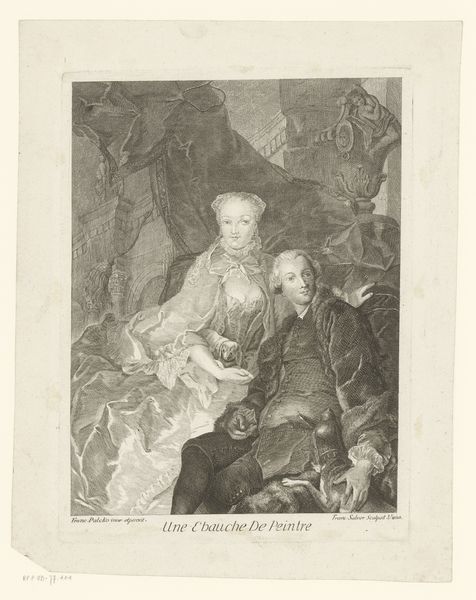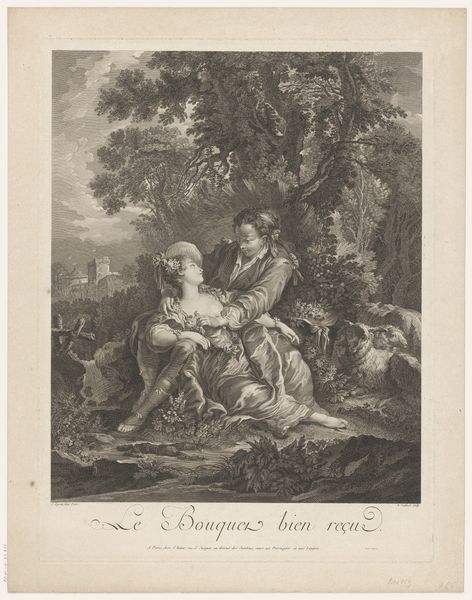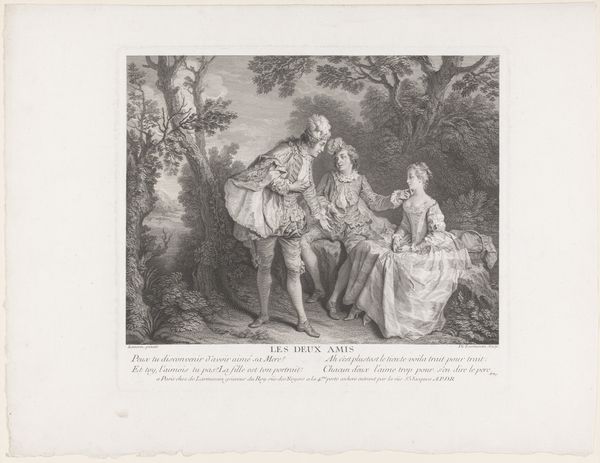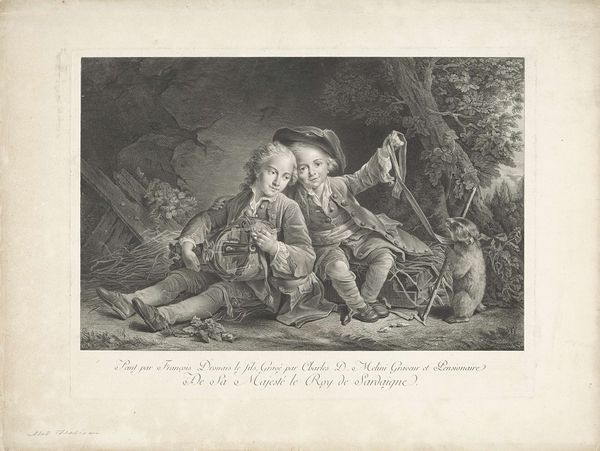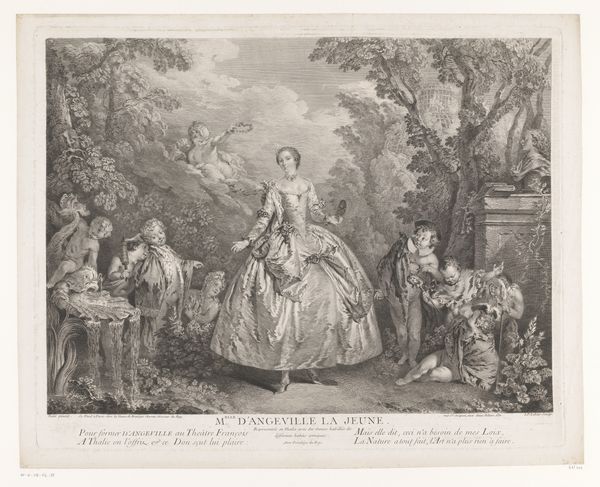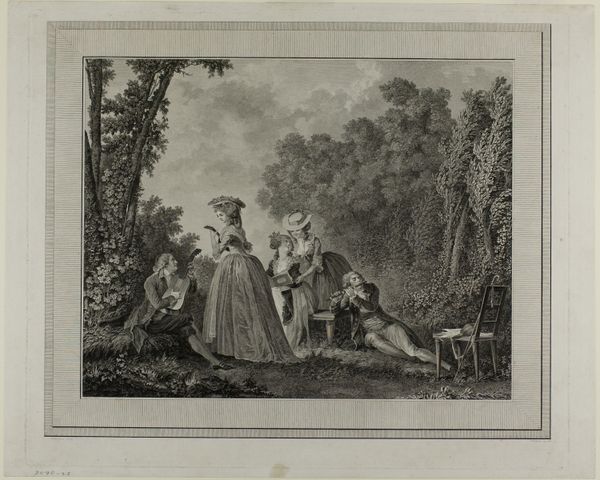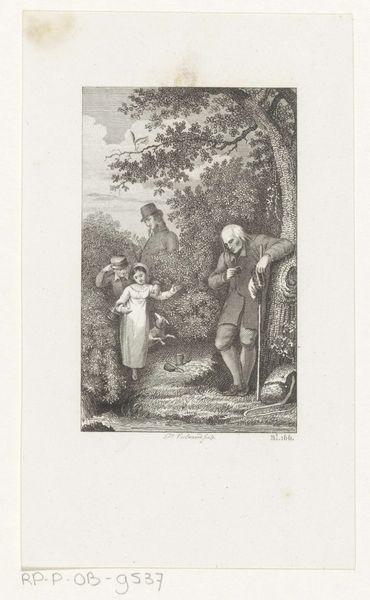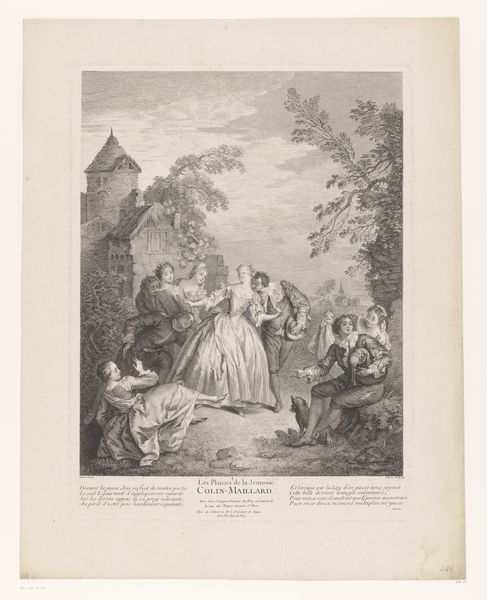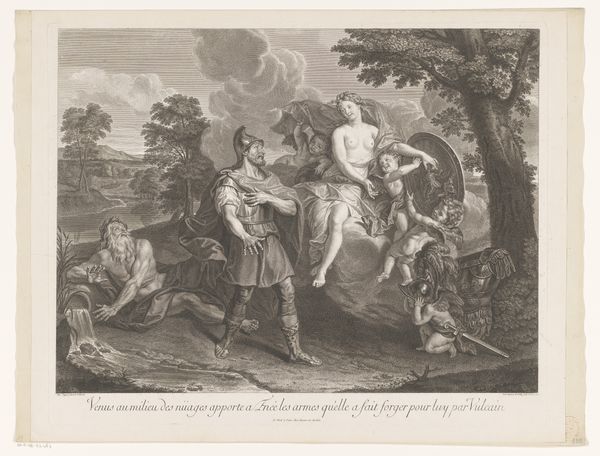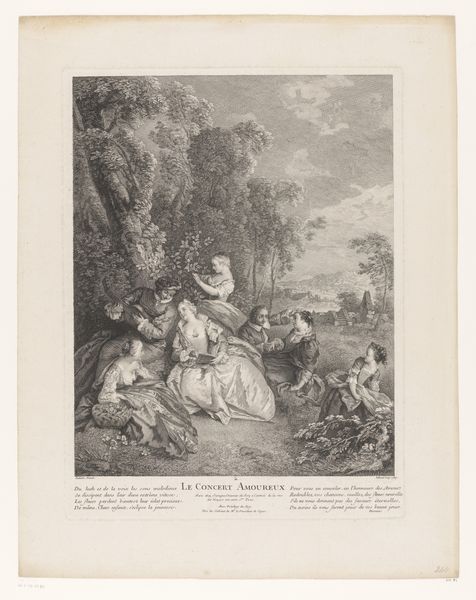
Portret van Karel X van Frankrijk en Clothilde van Frankrijk als kinderen 1838 - 1841
0:00
0:00
engraving
#
portrait
#
neoclacissism
#
old engraving style
#
genre-painting
#
engraving
Dimensions: height 319 mm, width 240 mm
Copyright: Rijks Museum: Open Domain
Curator: This engraving, executed between 1838 and 1841 by Amédée Félix Barthélémy Geille, presents a double portrait: Karel X of France and Clothilde of France, depicted here as children. Editor: It has this almost ethereal quality about it, doesn't it? The light, airy tones and delicate lines give it such a sense of innocence, but it feels a bit posed. Curator: It's certainly staged, reflecting the neoclassical style dominant at the time, often favored by the French Aristocracy for representing themselves. You see how the social conventions dictated a formal approach even in informal portraits of the children. Their garments, though clearly infantile versions, are inspired by courtly style. The little lamb the young girl is riding acts more like an ornament than an animal. Editor: Yes, and the setting seems deliberately constructed to evoke an idyllic past, that contrast is exactly what’s interesting. There's this undercurrent of privilege but also a vulnerability. Childhood often exists in interesting tension within political family structure. Curator: Exactly. Think of the power dynamics involved here. Even as children, these figures are carriers of political weight. Their clothing, the lamb - symbols of status and future authority are all embedded. This isn't just a depiction of children; it's a visualization of succession and power in France. We are seeing this image created almost a decade after Charles X abdicated power, with deep questions surrounding the idea of what it means to rule. The image thus plays in both nostalgia, while also alluding to current tensions. Editor: And considering the engraving medium, making it infinitely reproducible, that image is something crafted and intended for dissemination with specific ideas embedded for public consumption, not just family keepsake. It would allow a broader distribution of these cultivated notions of monarchy and lineage, especially important given the fragile state of affairs. Curator: It's fascinating how the piece manages to convey this delicate balance between private sentimentality and very public messaging. What does it evoke in you as a modern observer, divorced from that historical context? Editor: Mostly, it’s how deliberate every element appears, especially regarding gender performance. Despite their young age, roles are well defined, something so often perpetuated by visual languages throughout history. It really sparks me to examine the current gender roles and how they are created and imposed in various aspects of modern culture. Curator: It highlights how representations, even of children, are never truly innocent. This seemingly charming genre scene, in reality, acts as a vehicle for deeply embedded social and political ideologies. Editor: Precisely, the painting as a starting point that initiates in critical reflection on how such narratives continue to shape our understandings of power and identity today.
Comments
No comments
Be the first to comment and join the conversation on the ultimate creative platform.
